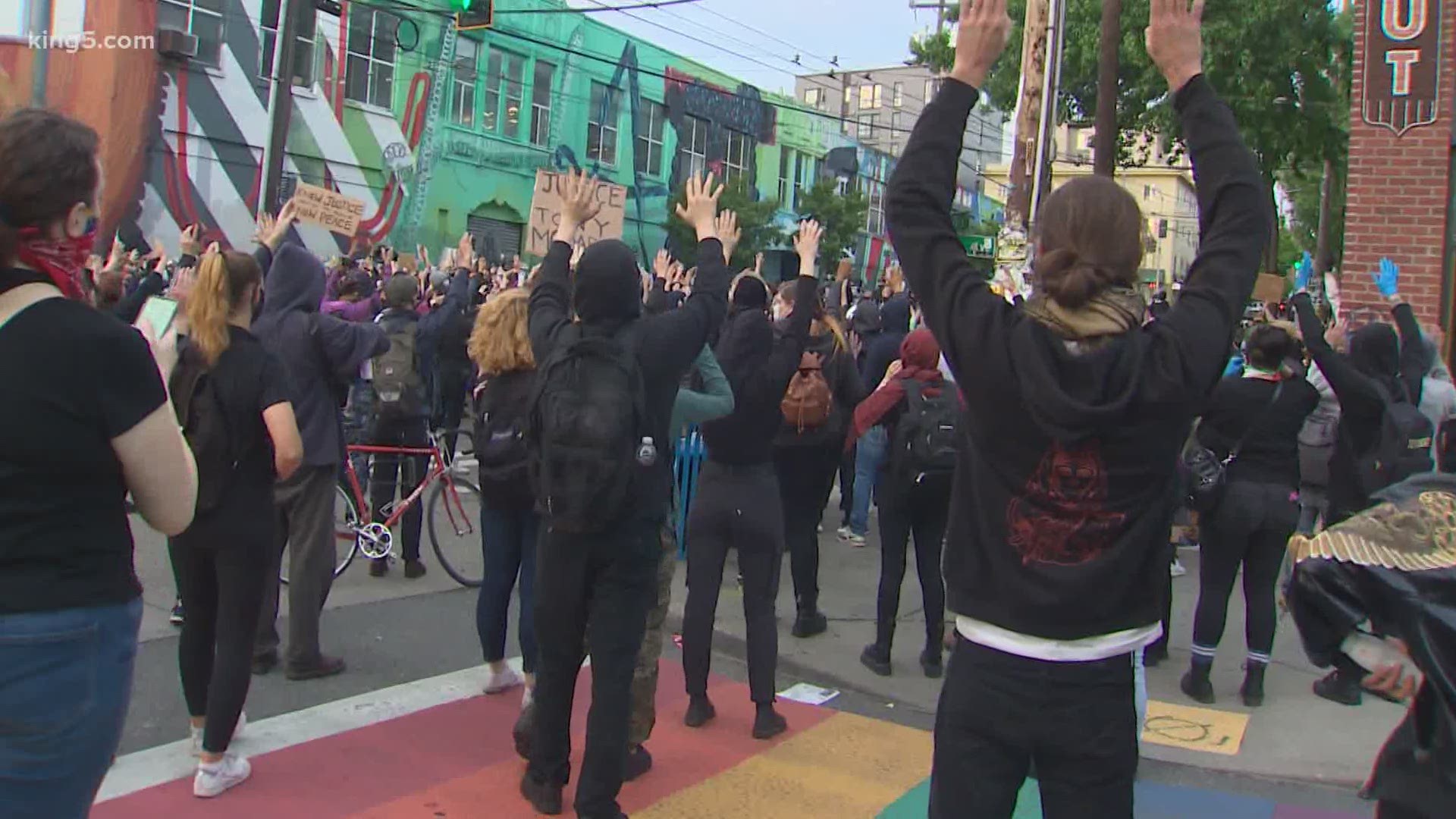SNOHOMISH, Wash. — As protests continue across the state of Washington, people from all over are coming together in a time when health officials say to stay apart.
According to Kittitas County public health officials, two cases of COVID-19 have been linked to a protest.
As people gather in large groups in big cities, smaller cities like Snohomish are seeing gatherings of their own.
Austin Eisenhuth witnessed protests last week near his work, J & L BBQ in Snohomish. He worries the lack of social distancing may cause a rise in Coronavirus cases.
“It’s just going to take longer to get back to fairly normal, I don’t know what that’s going to really look like,” Eisenhuth said, “As far as COVID goes, I think it will scare some people.”
So how does this impact coronavirus cases?
According to the Washington State Department of Health, on May 18, the number of onset coronavirus cases was 284. The incomplete data from last week shows those numbers then dip until there’s a peek again on June 5, with 282 onset cases, while the protests had been going on for about a week.
Statewide, Snohomish, King, Pierce and Yakima counties are still seeing relatively high numbers of COVID-19 cases.
Yakima County is showing the highest increase in cases while having the lowest population of those counties. Health officials point to a high number of essential workers, agricultural workers, and long-term care facilities as the reason for the increase.
Statewide, officials said it’s too early to tell if the increase is in fact linked to protests.
“I think it’s premature for us to draw any conclusions about the initial days of Phase 2, or even the result of people gathering for the protests at this point,” said Dr. Chris Spitters with the Snohomish Health District.
Because the virus has a 14-day incubation period, the numbers being reported are often from weeks prior to when the person actually caught the virus.
“What happens today in the community with respect to the transmission of the virus won’t show up in the number for one to three weeks,” Dr. Spitters said.
So it could still be weeks before data represents the true number of cases spread during the period of time protests were happening.
Eisenhuth hopes protesters are thinking about the risk of spreading the illness while they exercise their first amendment right.
“You should still be able to voice your opinion and protest, it’s your right to do so. And you should do it safely and be healthy when you do it. Wear a mask, try and distance yourself,” he said.

